Why Subroutines Cause Blindness
Editor's Note: This article is excerpted from chapter 7 of 21st Century RPG: /Free, ILE, and MVC, by David Shirey.
In OPM, subroutines are a handy way to encapsulate code and keep from having one big, ugly mess of mainline instructions.
Technically, in ILE and /Free, you can still use subroutines. The EXSR and whatnot are supported, so there is no problem there.
Nor are subroutines totally evil. Before ILE, they were the best tool you had to take a section of code out of the mainline logic of the BOP and put it in a little spot all its own. You could execute it multiple times in your program but only have the code out there once, and if it were properly named (not easy given the length restrictions), it could help improve the readability of the program as a whole.
But for all the good, there are a number of serious drawbacks to subroutines.
First, the subroutine was still part of the BOP, and if the same logic were required in several programs, it had to be inserted into each of those programs separately.
That is, it couldn’t be set up as a separate entity and called by a number of other programs.
In addition, if it were inserted in multiple programs, unless it were done via a/Copy, you could have minor variations in the code, which could affect the universality of the business rules the routine represented.
And, if you made changes to it, then even if it were in a copybook, you still had to compile all the programs that used that copybook.
Second, it couldn’t handle either local variables or parameters.
A subroutine’s use of global variables actually made it harder to follow how a particular data element was being used, because first it was here, on line 135, and then suddenly it dropped into line 5387 and probably other places as well.
The bottom line is: you should be using are sub-procedures, not subroutines. End of story.
Sub-Procedures
The idea behind a sub-procedure is simple: take some code lines that are doing a particular task, take them out of the mainline code, and put them in a little spot of their own. Very similar to subroutines. But there are some major differences.
First, sub-procedures can only be done in an ILE program. They cannot be done in OPM.
Second, sub-procedures are not delineated by the BEGSR/ENDSR tags, but by B and E (beginning and end) P-specs. More on P-specs in a minute or so (depending on how fast you read).
Third, and this is a big one, sub-procedures allow you to define local variables in between the B and E P-specs.
You do this using D-specs that are listed after the B P-spec. This way, you can define any variable you want and use it in the sub-procedure. But only in the sub-procedure. Local variables cannot be used in any other part of the program. They are strictly for the sub-procedure. In fact, you could even give them the names of global variables that are used other places in the program or repeat the names of local variables from other sub-procedures. I don’t recommend either of those options, but it’s doable.
I can’t tell you how important I think local variables are and how dangerous global variables are to good program structure.
Fourth, while subroutines are accessed by using the EXSR operator, sub-procedures are “called” by doing a prototype call (CALLP). Even within a given program.
You might think there is more work involved in doing a call rather than just an EXSR, but the truth is—well, actually I guess the truth is it is a bit more work. But only a bit. And it’s well worth it to have the other advantages.
And fifth, while subroutine code must exist in the program that is using it, a sub-procedure can actually be set up in a separate program (a service program) that is truly called into the calling program using the CALLP prototype call. Service programs are an incredibly useful entity, and we will talk more about them in a couple of chapters.
Sub-Procedure Inside a Program Example
Let’s start our ILE adventures by looking at a program that calls an embedded sub-procedure (that is, the sub-procedure is part of the program that uses it). The sub-procedure itself is very simple; it just validates a product number against a product master (MSPMP100). We will look at the whole mess, then break it down into its components for easy digestion. Give it a name to your own liking.
Now let’s take that program apart and see what makes it tick. You should be able to detect hints of apricot and chocolate and ... but there I go again. Each person tastes something different, and I shouldn’t try to plant suggestions.
Because I am doing this as if you are on 5.4 rather than 7.x, some things are present that may not be if you are on a more recent release of the software. Like having the F-, D-, and other specs be positional, and then having to use /Free and /End-Free to segregate the /Free from the positional code. Or the need for the H-spec to ensure this is compiled as ILE (more on that later). Sorry about that, but many of us are still back in that old era. It should not stop you from doing ILE.
Oh, and by the way, I am listing the code first, and then under it putting the discussion of that code. I would have been confused about that myself. As you go thru this section, DON’T focus on the text description. Focus on the code, devour it with your eyes, think about what you see, experience its richness and vibrancy. The text description is just to give it context, to help clarify what you are seeing. But focus on the code itself.
First, the H-spec. This is put in there because sub-procedures are an ILE construct. So they cannot be in a program that uses the default activation group (that is OPM). The H-spec makes sure that the program is compiled as ILE, but if the defaults in your compile command are set for that, then you would not need this H-spec. I am assuming you will compile this with CRTBNDRPG instead of CRTRPGMOD/CRTPGM.
This is then followed by the F-specs for this program.
Note that I am using a product master file plus a display file, and I am going to be pretending that I am picking up data entry fields from the display and editing them against the product master file for validity.
Remember, if you are on 7.1, TR7 or higher, we could set these up as file control statements. But since I am doing this book from a 5.4 perspective, we will set them up as F-specs.
Then come the D-specs. The global D-specs. We are still in our mainline program here; we haven’t gotten to the sub-procedure yet. Just be patient, and quiet ... very, very quiet. We don’t want to spook it.
There are two things here in the D-specs. The first is the prototype D-spec, the thing identified with the PR as the D-spec data type. This is required in the program D-specs, and it identifies what sub-procedures will be used (by the CALLP) in that program. The D-spec subfields under it for D01_PRDNO, MSG, and ERROR_FLAG are the data elements that are passed in when the sub-procedure is “called.” Please note that there is no EXTPGM keyword on the PR, because we are not calling an external program, just a sub-procedure in this program.
If you had more than one sub-procedure embedded in this program, then you would need a PR prototype D-spec for each one of those sub-procedures.
Below that are two more D-specs: ERROR_FLAG and MSG.
ERROR_FLAG is a global data element, and it is used in the sub-procedure but also in the program calling the sub-procedure. Our little snippet does not show the ERROR_FLAG being used, but if there were more calls to other sub-procedures, they would be contained within an IF statement checking to see whether or not the ERROR_FLAG were set.
MSG is also a global variable, just a message field that we will set if there is an error.
What is interesting is that both of these fields are defined under the PR D-spec. So why are we defining them here again? Have I screwed up, defined them twice, and so the compile will fail? Normally, that would be a very good guess indeed, but not tonight. They are there because even though I have “defined” them in the PR above, anything listed in a PR is not really defined. It has to exist somewhere else, and so I have defined the field in a second, normal D-spec. Why aren’t things in a PR really defined to the system as fields? You might as well ask why the earth is an oblate spheroid. Because. Just because that’s the way it is. Deal with it.
This is the /Free code that calls the sub-procedure.
And it’s very simple. I set the ERROR_FLAG (a global variable) to 'N', then call the sub-procedure, and then end the program. If this were a real program, we would probably have more calls to other sub-procedures, each covered by an IF ERROR_FLAG clause, to edit each of the fields on the display file. Oh, I guess I did use the ERROR_FLAG, after all, to initialize it.
Note that the call to the sub-procedure VAL_PRDNO is actually a call, using CALLP (Call Prototype).
And notice that the three data fields mentioned (can’t really say defined) in the VAL_PRDNO PR are sent to the sub-procedure as parms separated by a colon and surrounded by parentheses.
Just as an interesting side note, if there were no parms being sent to the sub-procedure, then nothing would be listed under the PR line in the D-specs (although we would still need the PR itself), and nothing would be included in the parenthesis on the CALLP. However, the parenthesis would still be included; they would just be empty—().
Finally, the /end-Free delimiter needs to be set because when we define the sub-procedure (next step), we will use P-specs and D-specs, which are positional RPG, not /Free. Granted, in 7.1 TR7, we can make them /Free, but that is not the version of the operating system that this book is based on.
The sub-procedure itself really starts with the P-spec that has a B in position 24. The two lines above that are just icing that I put in to make it easier to see. Note that even though I have come out of /Free (last statement on previous page), I can still use the double slash for comments. Pretty cool, eh?
Then we have D-specs for the sub-procedure. If you are on a release 6.1 or above, you can also include F-specs in here, so instead of defining the files at the global level, you can define them in the sub-procedure. (This is separate from the stuff in 7.1 TR7.) But we are at 5.4, so that option is not open to us.
Note that we have another D-spec that defines the prototype, but this one is a PI, which is called the procedure interface. So we have a PR in the program and a PI in the sub-procedure. Let’s replay that one more time. The PR is the prototype D- spec; the PI is the procedure interface D-spec. Try to remember that.
Then, we have one more D-spec for SP_PRDNO. Technically, this field is not necessary for the functioning of this module. I could have just as easily used the global variable D01_PRDNO from the display file, but I was so excited about local variables that I just had to define one. If you tried to use this local variable (SP_PRDNO) in the mainline code above, you would get a compile error saying the data element was undefined. But you can use it in the sub-procedure code below.
Please note that the PR and PI specs are D-specs. D-specs. The P-specs are just used to denote the start and finish of the sub-procedure as a whole.
Finally, we are into the code for the sub-procedure. As you can see, we are going back to /Free here, and the code is very simple. Like subroutines, all the sub-procedures will be listed after the *INLR = '1' in the mainline logic.
Even though I don’t need it, I set the local variable equal to the value from the display file and used that to read the product master file. I could have just as easily used D01_PRDNO, which is a global variable, in the statement. There is no advantage to using the local variable here; I just wanted to showcase it. There are, however, advantages in general to using local variables.
If it doesn’t get a hit, I set the ERROR_FLAG to 'Y' and throw message verbiage into the MSG field. Both of these values (the parms) are returned and can be used in the mainline code. The only thing that can’t be used in the mainline is the local variable SP_PRDNO.
Finally, the very last line in the whole mess is another P-spec, this one with a E (for End). If there were other sub-procedures in the program, they would be listed below just as we list subroutines below each other at the very end of the program.
One More Thing: Debug
There is one more thing that I should probably mention.
One of the best ways to get into these methods is to run debug through the programs. But if you are using STRDBG (Start Debug) in PDM, you may be surprised when the F10 sequencing skips right over the sub-procedure.
To step into the sub-procedure, you can either set a breakpoint within the sub-procedure and use F12 to get to it or else use F22 versus F10 when you are ready to step into the sub-procedure.
What You Shoulda Learned
Yes, it’s different from the way we do subroutines. Not completely different— there are some similarities, but different enough to be different.
But it’s not bad. I mean, it’s doable. Really pretty easily doable. And by the end of this episode, if you did the Now It’s Your Turn activity, you should know how to:
- Learn about the differences between subroutines and sub-procedures.
- Code up a sub-procedure that is used internally in a
- Learn about the difference between global and local
- Learn how to code up both the PR (prototype) D-spec, and the PI (procedure interface) D-spec.
- Learn how to use the P-specs, both the B and E Also, make sure you are clear on the difference between the P-spec, and the D-specs that define the prototype, and the procedure interface—that is, the PR and the PI.
Take a minute and think how odd it is that to access the sub-procedure in the program you have to use a CALLP. But just a moment. And then smile, and say to yourself in a very calm voice, “But I think that’s nice.” If that doesn’t work, try a double bourbon straight up. Don’t sip.
Remember that this is an ILE program, so you must compile this program as ILE (that is, with the DFTACTGRP set to *NO and an ACTGRP specified in the compile). Otherwise you can expect some very weird errors in your compile. Including the H-spec will take care of this.
Even if you never go any further with ILE than doing this (using sub-procedures instead of subroutines), you will have made an important step forward in your professional development. But, of course, you will go further, especially after the subliminal messaging in this chapter kicks in. Oh, yes, you will go further.
Want to learn more? You can pick up Dave Shirey's book, 21st Century RPG: /Free, ILE, and MVC, at the MC Press Bookstore Today!












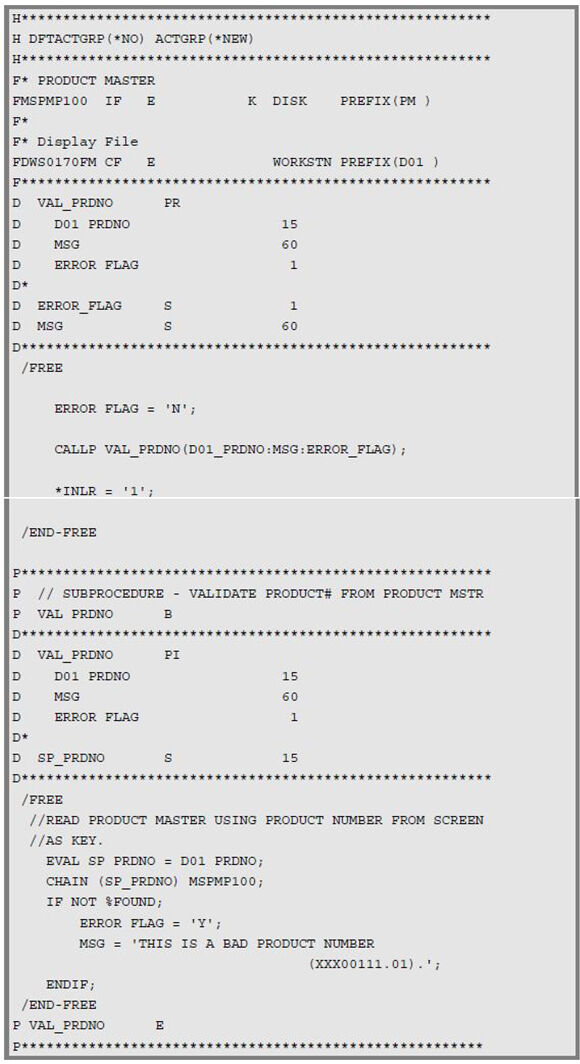


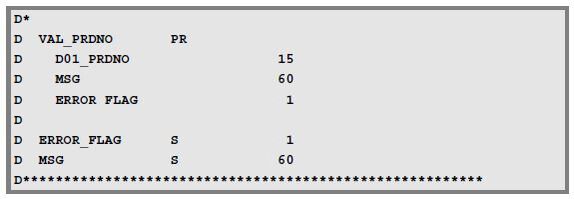
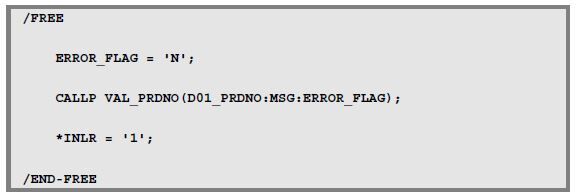
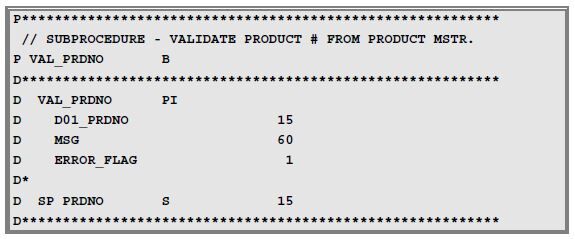
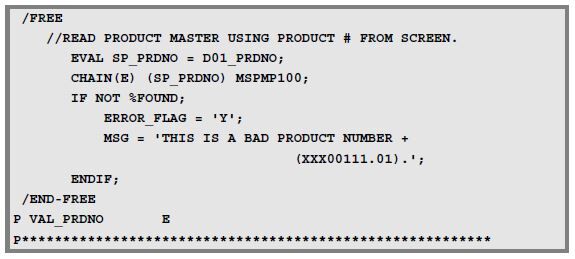
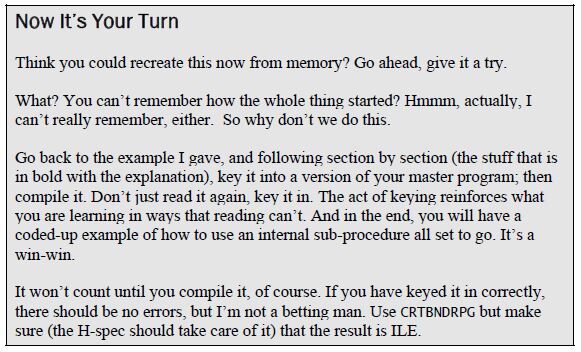



 Business users want new applications now. Market and regulatory pressures require faster application updates and delivery into production. Your IBM i developers may be approaching retirement, and you see no sure way to fill their positions with experienced developers. In addition, you may be caught between maintaining your existing applications and the uncertainty of moving to something new.
Business users want new applications now. Market and regulatory pressures require faster application updates and delivery into production. Your IBM i developers may be approaching retirement, and you see no sure way to fill their positions with experienced developers. In addition, you may be caught between maintaining your existing applications and the uncertainty of moving to something new. IT managers hoping to find new IBM i talent are discovering that the pool of experienced RPG programmers and operators or administrators with intimate knowledge of the operating system and the applications that run on it is small. This begs the question: How will you manage the platform that supports such a big part of your business? This guide offers strategies and software suggestions to help you plan IT staffing and resources and smooth the transition after your AS/400 talent retires. Read on to learn:
IT managers hoping to find new IBM i talent are discovering that the pool of experienced RPG programmers and operators or administrators with intimate knowledge of the operating system and the applications that run on it is small. This begs the question: How will you manage the platform that supports such a big part of your business? This guide offers strategies and software suggestions to help you plan IT staffing and resources and smooth the transition after your AS/400 talent retires. Read on to learn:
LATEST COMMENTS
MC Press Online